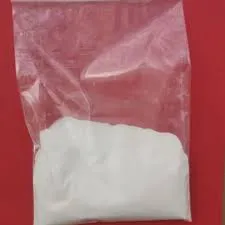Chemicals Used in Sewage Treatment Plants
Sewage treatment plants (STPs) play a crucial role in maintaining public health and environmental integrity by treating wastewater before it is discharged into natural water bodies or reused. The process of sewage treatment involves various physical, chemical, and biological methods to remove contaminants. Chemical treatment is an essential component of this process, utilizing a variety of chemicals to enhance the efficiency of wastewater treatment. This article explores the key chemicals used in STPs, their applications, and their impact on the treatment process.
1. Coagulants
Coagulants are chemicals used to aggregate and destabilize suspended particles in wastewater, facilitating their removal. The most commonly employed coagulants include aluminum sulfate (alum), ferric chloride, and polyaluminum chloride. These substances work by neutralizing the charges on particles, allowing them to clump together and settle out of the water column. Coagulation is particularly important in the primary treatment stage, where large amounts of solids need to be removed.
2. Flocculants
After coagulation, flocculants are often used to promote the formation of larger flocs that can be more easily removed from the treated water. Organic polymers, such as polyacrylamide, are frequently used as flocculants. They help to bind smaller particles together, resulting in larger aggregates that can be separated from the liquid more effectively. The addition of flocculants can significantly improve the efficiency of sedimentation processes in STPs.
3. Disinfectants
Disinfection is a critical step in the treatment process to eliminate pathogenic microorganisms. Several chemicals are commonly used for disinfection, including chlorine, chloramines, ozone, and ultraviolet (UV) light. Chlorine is a widely used disinfectant due to its effectiveness and low cost, although it can produce harmful byproducts, such as trihalomethanes (THMs). Ozone is another powerful oxidizing agent that can effectively inactivate bacteria and viruses without forming harmful residuals. The choice of disinfectant often depends on the specific requirements of the treatment facility, regulatory standards, and environmental considerations.
what are the chemicals used in stp plant

4. pH Adjusters
The pH of wastewater is an important factor that affects the efficiency of various treatment processes. Chemicals such as sodium hydroxide (caustic soda) or sulfuric acid are often used to adjust the pH levels to optimal ranges for treatment. Controlling the pH is crucial for enhancing the performance of coagulants and disinfectants and ensuring that biological processes function effectively.
5. Nutrients
In biological treatment processes, particularly in activated sludge systems, the addition of nutrients such as nitrogen and phosphorus may be necessary for promoting the growth of microorganisms that degrade organic matter. Ammonium sulfate or urea can be added to supply nitrogen, while phosphates might be used to provide phosphorus. Balancing nutrient levels is essential for achieving optimal biological treatment efficiency.
6. Adsorbents
In treating certain pollutants, especially heavy metals and organic compounds, adsorbents such as activated carbon can be utilized. These materials can effectively capture and retain contaminants, improving the overall quality of the treated effluent. The use of activated carbon may not only enhance the removal of specific pollutants but also play a role in reducing odors in the treatment process.
Conclusion
The effective operation of sewage treatment plants relies heavily on the strategic use of chemicals throughout the treatment process. Coagulants, flocculants, disinfectants, pH adjusters, nutrients, and adsorbents work in synergy to ensure that wastewater is treated to meet regulatory standards and protect environmental health. Understanding the role and impact of these chemicals is essential for optimizing the performance of STPs and ensuring sustainable wastewater management practices. As technology and environmental regulations evolve, ongoing research into new chemical alternatives and treatment methods will continue to shape the future of sewage treatment.

